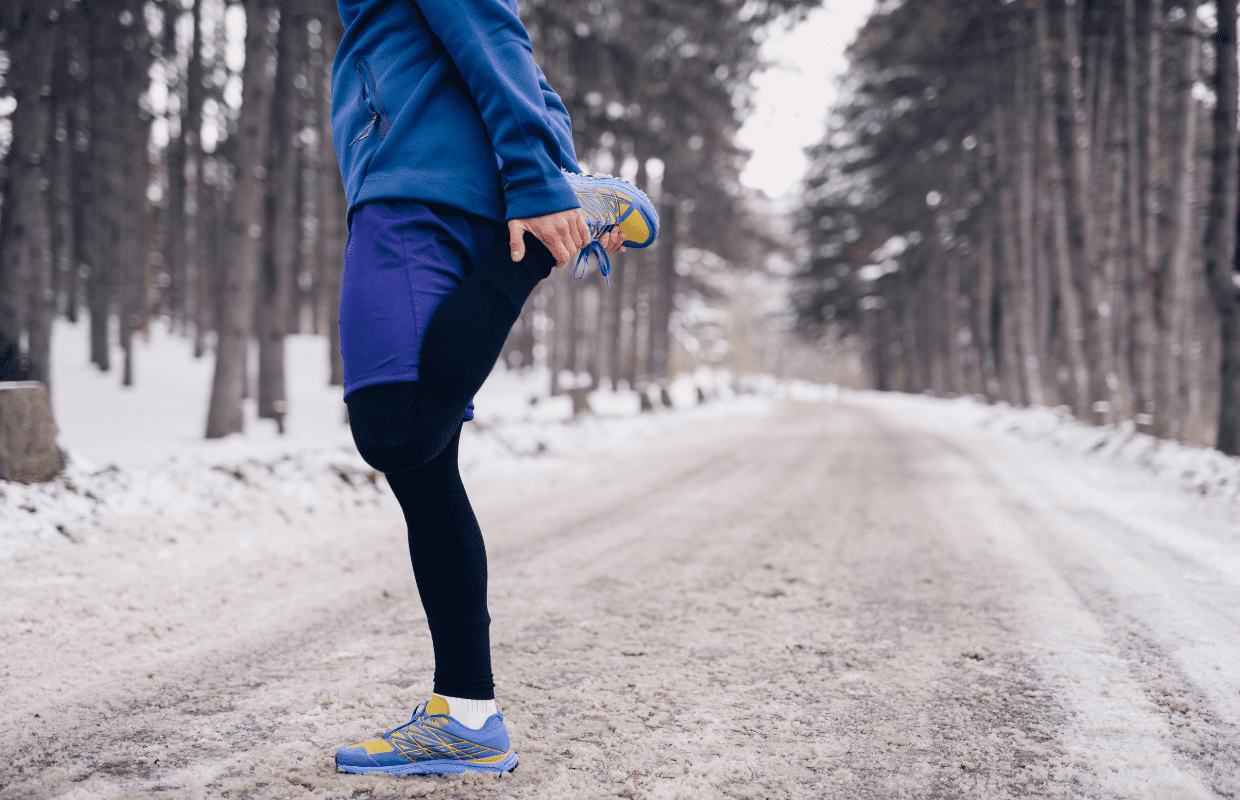
Follow these tips to exercise safely during winter
This winter is pummeling many people’s workout goals. As the highly contagious Omicron coronavirus variant continues its rapid spread around the globe, indoor exercising in public gyms is often less appealing or accessible. Yet recent storms and plunging temperatures may make outdoor workouts seem daunting, or even dangerous. Experts say, however, you shouldn’t fear braving the elements.
“Exercising in the cold is not a health hazard and can be a healthy activity,” said Alex Tauberg, a chiropractor with Pittsburgh’s Tauberg Chiropractic & Rehabilitation.
Being outside and in nature is good for your mental health, studies have shown. This is especially true during the winter, when many people suffer from seasonal affective disorder (SAD), a form of depression. There is just one caveat to alfresco winter workouts, Tauberg said: You have to take the proper precautions.
The risks are very real. Cold is a leading cause of death among people playing sports, according to the expert consensus statement on cold-weather exercise issued by the American College of Sports Medicine in November 2021. Your body works harder to maintain its core temperature in cold weather, and it’s easy to become dehydrated, frostbitten or hypothermic.
That said, it’s not difficult to avoid disaster. Here are key ways to assess your risk and mitigate potential hazards once you’re outside.
Important note: Before beginning any new exercise program, consult your doctor. Stop immediately if you experience pain.
Know the temperature and wind chill
A low temperature plus wind can be a deadly combination, so check both the forecast and wind chill factor before heading out. When the wind chill value nears minus 25 degrees Fahrenheit (minus 31.7 degrees Celsius), frostbite can occur within 15 minutes, according to the National Weather Service. Even when the air temperature is 5 degrees Fahrenheit (minus 15 degrees Celsius), frostbite can occur within a half hour if the wind is gusting at 30 miles per hour (48.3 kilometers per hour). There are other considerations, too.
“We know if you step outside on a cloudy day where the dry-bulb temperature is minus 10, it feels very different than on a sunny day where it’s minus 10 but you have the solar load,” said Mike Tipton, a professor of human and applied physiology at the University of Portsmouth in Hampshire, England, and a contributor to the ACSM’s expert consensus statement.
But if you want to have a set figure to rely upon, the ACSM recommends staying inside when the temperature is below minus 8 degrees Fahrenheit (minus 22 degrees Celsius).
Be aware of your personal risk factors
Unfortunately, some people are more susceptible than others to injury or ill health when exercising in the cold. The ACSM lists men, Black people, smokers, and those with heart and vascular diseases among the groups predisposed to frostbite.
“People with asthma, and especially exercise-induced asthma, should be very careful about working out in the cold,” Tauberg said. “Asthma can be exacerbated by cold, dry air and cause asthma attacks.”
Dress in layers
One of the most critical aspects to safely exercising in the cold is dressing in layers, with three being the magic number: an inner layer touching your skin that draws sweat to the outer layers; a middle layer that serves as your main insulator; and a light outer layer that repels wind and rain while allowing moisture from your body to escape.
This three-tiered system works, in part, by trapping air in between the layers, which serves as added insulation from the elements. But you must select layers made of appropriate materials, such as wool or technical fabrics like Polartec or Dryline, which helps ensure sweat is moved away from the body and released to evaporate in the air. In addition, a hat is a must; you can lose at least half of your body heat if your head is bare. It’s also important to cover your hands and neck.
Adjust your layers as needed
The main purpose behind layering your clothes is that it enables you to remove items as you heat up, then put them back on when you cool down.
If you don’t remove layers as you warm up, you will likely overheat and become sweaty. And when you sweat, the water droplets fill the gaps in between your layers, replacing the air that helps with insulation. While you’re exercising and still creating heat, a little sweat isn’t a huge issue. But if you stop moving you’ve got a problem, because cold air and water is a deadly combination that fosters hypothermia.
“It’s difficult to keep taking stuff off, putting it in your rucksack, then putting it back on,” Tipton said. “The urge to keep going is enormous. But you have to fight that urge and just do it.”
Pay attention to your footwear
Some people assume an insulated, waterproof boot or shoe is the best winter footwear. Yet if you don an insulated and vapor-impermeable shoe or boot, you will sweat and end up with cold, wet feet. You may even develop frostbite wearing that oh-so-warm shoe, Tipton said, although if your feet are cold and wet for many hours, it’s more likely you’d develop a nonfreezing cold injury such as trench foot, which can be a significant problem.
So make sure to select vapor-permeable footwear for your winter workouts. And if you’ll be walking, running or hiking where there is a lot of ice, slip on traction cleats or snowshoes.
Drink, drink, drink
Dehydration isn’t just a hot-weather phenomenon. In fact, it may be more of a concern when the temperature drops. That’s because you’re breathing in freeze-dried air, then warming and humidifying it in your lungs before breathing out 100% water vapor. You can lose up to 2 or 3 liters of fluids per hour, Tipton said, and become significantly dehydrated. Even worse, the cold diminishes thirst by as much as 40%, so you may not even realize you’re becoming parched.
The best thing to do is drink before, during and after you exercise. “Sip water frequently, don’t guzzle it,” said Sue Hitzmann, a New York City manual therapist and connective tissue specialist. “If you drink more consistently more often, your cells stay more hydrated and you transport nutrients more efficiently.”
Downing 10 ounces of water every 30 minutes is the recommendation of Dr. Mark Slabaugh, a sports medicine and orthopedic surgeon at Baltimore’s Mercy Medical Center. “However, increased wind chill necessitates even more fluid consumption,” he said.
Fuel yourself properly
If you will be exercising in the cold for more than an hour, it’s important to eat a few snacks to maintain your blood sugar levels. A few possibilities: a peanut butter sandwich, trail mix with dried fruit, or an energy bar.
“If your blood sugar falls too far, you’ll lose your shivering ability and your perception of cold,” Tipton said. “You’ll tend to think you’re warmer than you are.”
Stretch before and after you exercise
Stretching is even more important during the cold winter months, when your muscles contract to conserve heat, which makes them tighter and more prone to injury, said Jorden Gold, founder of Stretch Zone, a chain of practitioner-assisted stretching facilities, and adjunct professor at Educating Hands School of Massage.
“Think of your muscle like a stick of taffy,” he said. “A cold stick of taffy would tear or break if you tried to quickly bend or stretch it before warming it up in your hands first.”
Gold recommends performing dynamic warm-up stretches, such as leg kicks or arm circles, for at least 10 minutes when temperatures sink to 45 degrees Fahrenheit (7 degrees Celsius). Add five minutes to that for every 10 degrees colder. After you exercise, doing some cool-down, static stretches — holding a position for 30 seconds or more — will help slow your heart rate and relax your muscles, plus improve your range of motion and flexibility for future workouts.

